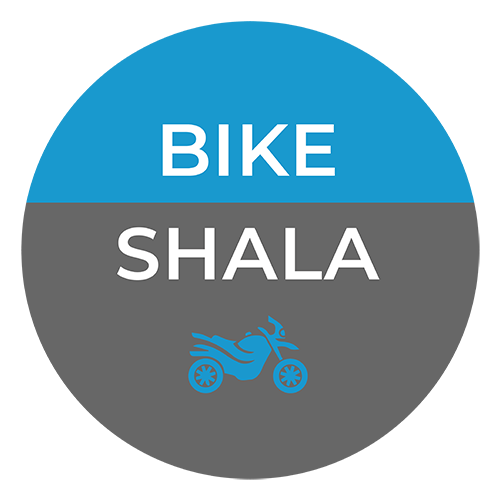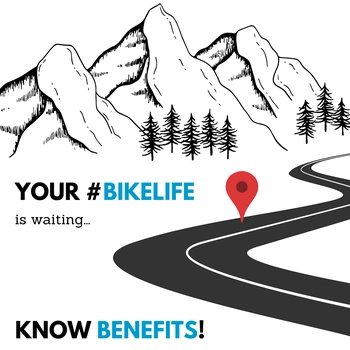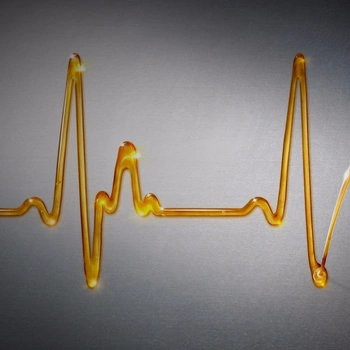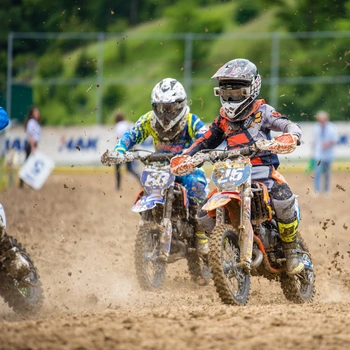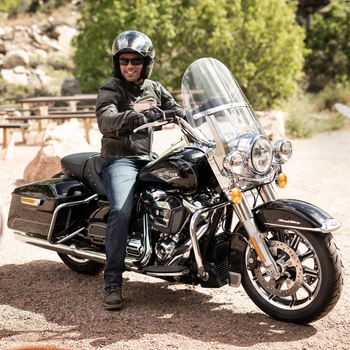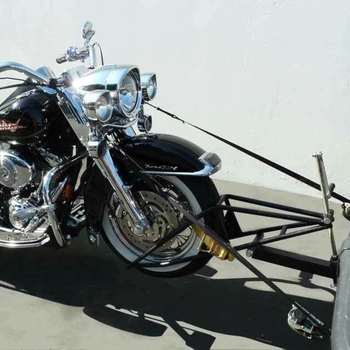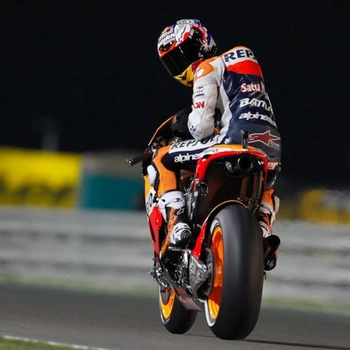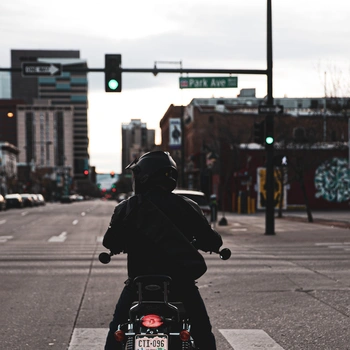
Many vehicle accidents, especially when stopping at a stoplight, happen due to the bike getting rear-ended. It only takes a split second to get distracted and hit a motorcycle from the back. An act just ruins someone' life and causes serious injuries or damage to the bike. An attentive driver pays attention to the light changing from green to yellow to red and keeps an eye on the vehicles coming from the other lane at the stop.
Table Of Content:
Which foot to put down when stopping a motorcycle at traffic lights with balance
A motorcyclist should ideally keep the left foot down, right foot on the brake and the bike in gear at the traffic light. Obviously, that needs you to hold the clutch of your motorcycle to dis-engage the clutch plates. This position allows for an immediate throttle apply and release of the clutch under a sudden threat.
In hill starts, rear braking also helps. To stop the bike from rolling backwards, just apply enough brake pressure. Then, clutch out to overcome the brake pressure. Let off the rear brake, and you are moving.
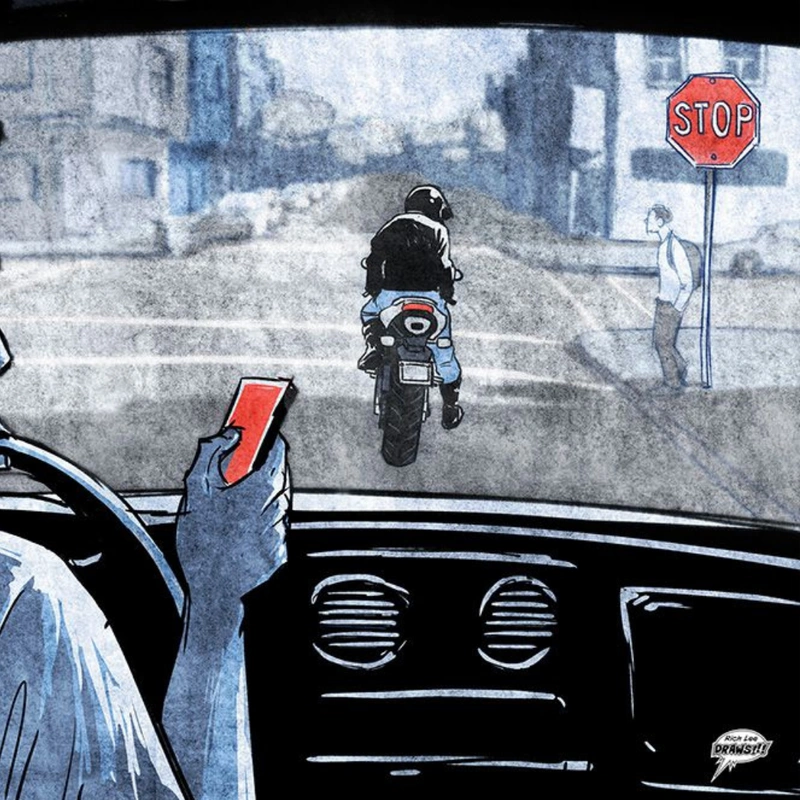
At every stop point or traffic light, have an escape plan. For some, lane filtering works, and in case there are cars on either of you, the chances of you getting trapped or squeezed when either of them is rear-ended are quite problematic. If no traffic is coming, the biker can go around the corner, on the sidewalk if there are no pedestrians. The point here is everyone should have an escape plan to avoid getting rear-ended.
How to stop a motorcycle without stalling & need to downshift
When coming to a stop on a red light, just roll off the throttle and let the revolutions drops low enough (not to the stalling point. Now apply brakes, clutch in and downshift a few gears, match revolutions and release without engaging each intermediate gear. If you are stopping, definitely at a traffic light, you may go to the 1st gear otherwise to the 2nd or 3rd gear.
While approaching a stop, throttle down, brake first and then clutch. Using a clutch before braking will actually speed up you for a second, and you may lose the traction. The reason hers is that when you down the throttle, you begin to deaccelerate, and the weight starts to transit forward. Here, if you clutch in, you free up the engine, and the weight transits back. The proper sequencing of stopping at a stop is to smooth throttle off with the right hand, right foot gently placed on the brakes, not forcefully.
Now smoothly apply the front brake with the right hand, clutch in, and the left foot goes down the first gear.
Panic braking at Stop Light
In a Normal stopping situation, you just apply brakes so that the person behind you knows you're slowing down, even if you intend to slow via engine braking (Not advisable). Clutch in, downshift, clutch out. In, shift, out. All the way to first and stopped. Depending on the road and speed, you might skip 3rd or 4th gear and keep it in 2nd.
During a Panic stop or Emergency Stopping, you apply the front brake, rear brake, clutch in, keep dropping down gears until you're in first. If you come to a full stop, make sure to check behind as you may need to move quickly to avoid vehicles behind who are still stopping or who haven't noticed.
A user shares his learnings as:
"Release the throttle. Apply brakes both front and rear first, then hold the clutch to disengage. By using the clutch before applying brakes, you'll actually speed up for a second and be oscillating the bike's weight, and nowhere you want to lose off traction. The reason for that is when you let off the throttle, and you are beginning to decelerate, the weight starts moving forward. At this point, you should start braking your motorcycle. If you clutch in, you free up the engine, and the weight transitions back."
A more specific suggestion would be to apply the rear brake first since your right hand is busy letting off the throttle in a smooth fashion. Then front brake with clutch hold after that to maintain the deceleration. With practice, this will all happen in a fraction of a second.
Step 1: Right-hand smooth throttle off, right foot smooth down on brake not very forcefully, just to keep weight forward.
Step 2: Right-hand move to front brake and smoothly down, all the way if necessary. Not jerky.
Step 3: Hold the clutch in, and the left foot goes banging down the gears to first.
Step 4: Now, with feet down at a stop, check your drawers."
Keep an eye on the mirrors and regularly check your surroundings. Bright coloured clothing and riding gears make a perception of things appearing bigger and closer. This can trigger an alert to the driver. Ride with confidence and be aware of your driving limits and be safe for you and other riders.
You can also read our article on Engine Braking here to avoid that in such scenarios.
How to start a motorcycle without stalling
Stalling happens when insufficient power is fed from the engine to the rear wheel to keep your motorcycle moving. To have a clean start, hold the bike steady on the front brake with the engine running and your right foot down. Put it into gear and switch to having your left foot down with the clutch still pulled in. This allows using the right foot on the rear brake and freeing up the throttle hand to easily control the revolutions.
Now ease the clutch out, gradually increase the revolutions, feeling the point where the clutch starts to bite and loads up the engine. As you get to this point, come off the rear brake and balance the engine power.
You are most likely to lock the rear-wheel and overrun the engine if you suddenly engage the clutch at a lower gear and high speed. Remember, the clutch needs to be disengaged only when you reach a shallow speed or are almost stopping to prevent bike stalling.
Another point worth a mention here is that car gearing is very different from bike gearing. The 1st gear is pretty tall, while the rest of the gears are closer together in a motorbike. This is why bikers can hit around 100km/hr without having to shift the gears.
User's suggestion:
"A lot of people recommend letting out the clutch slowly, to expand on that: the problem I had, I think you're having, and a lot of people have, is dumping the clutch as soon as you start to feel it bite. It would be best to let out the clutch slowly even after you feel the bike start to move forward. If you want to practice something specific, try rolling the bike a few feet forward with only the clutch, then stop. Don't push with your feet at all; you can still use them to balance. Keep the clutch pulled halfway, so you're in the friction zone, but not fully released or fully pulled."
